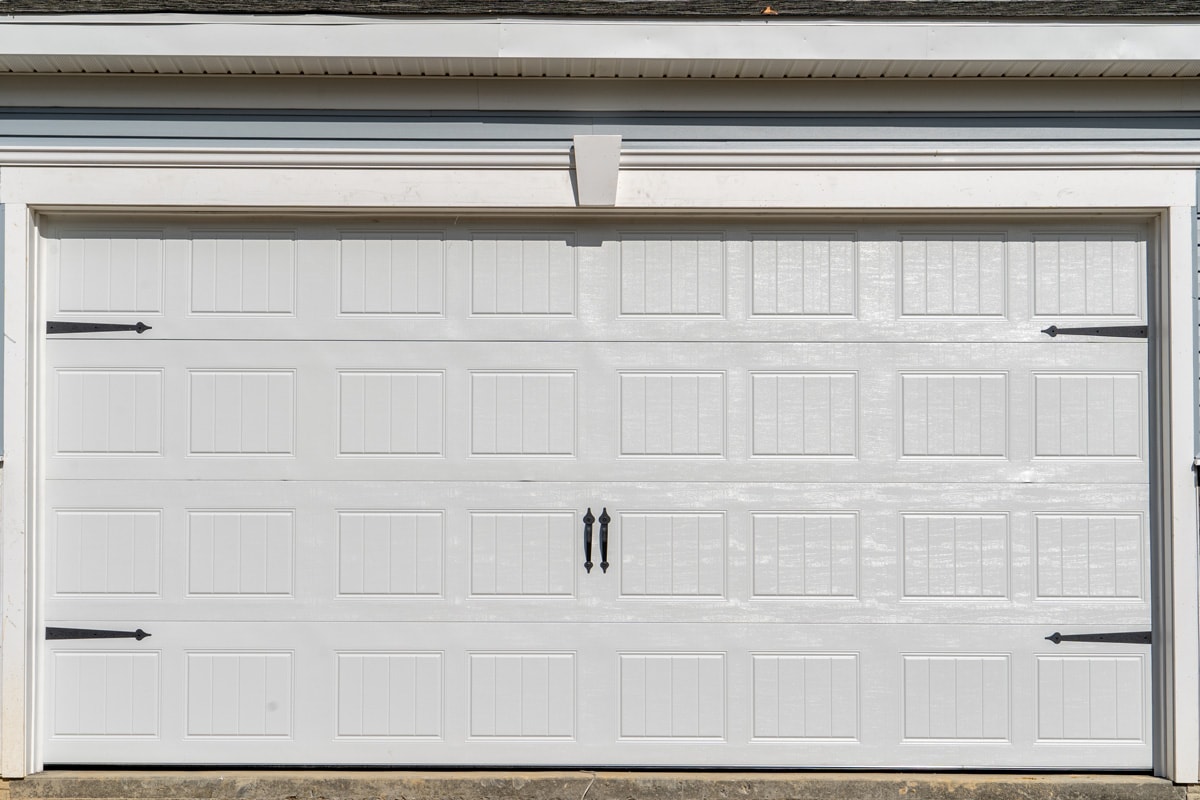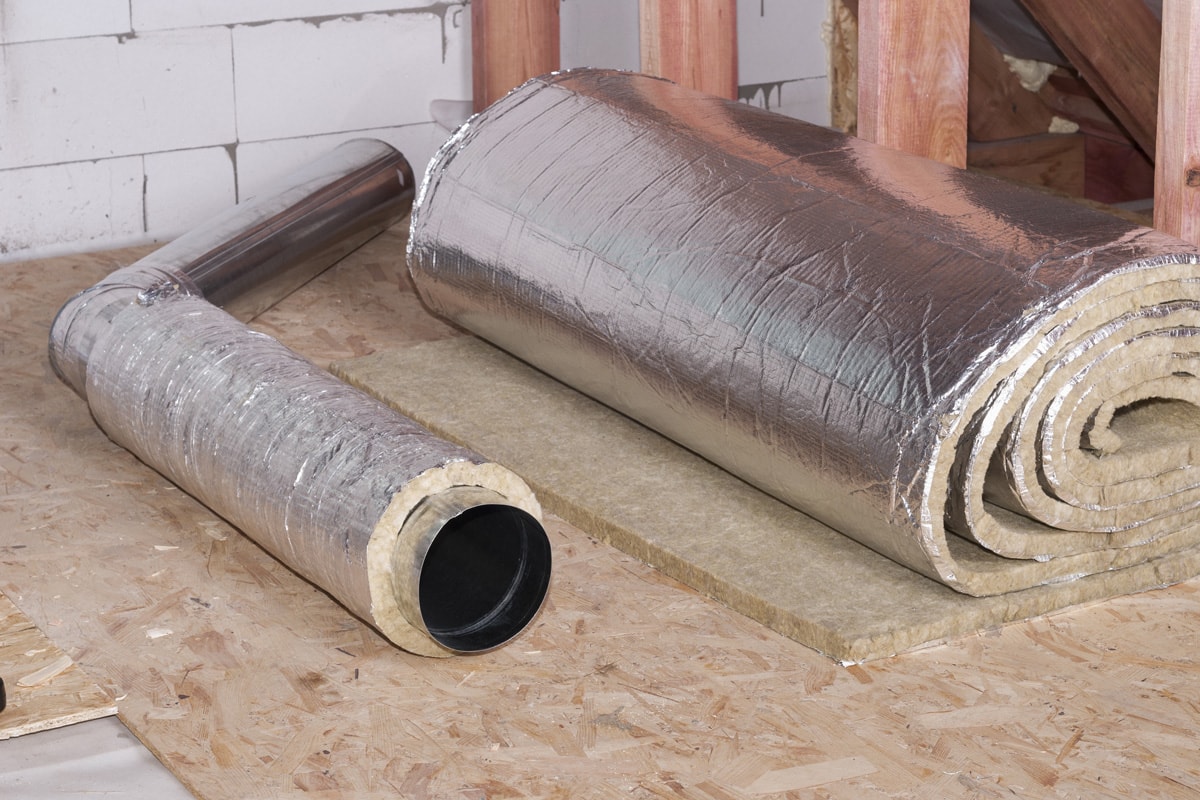US Energy garage door insulation helps control the temperature in your garage by adding an extra layer of insulation to your garage door. It helps decrease your energy bills and make your home cozier. It's also a leisurely and reasonable DIY project. But how do you install this garage door insulation? We did the research and found the answers.
The basic steps on how to install US Energy garage door insulation are as follows:
- Clean your garage door.
- Measure your garage door.
- Attach the double-stick adhesive.
- Affix the insulation panels.
You can convert your garage into a more relaxing and energy-efficient area with just a few tools in a short time.
In this article, we'll walk you through the basic steps to install it yourself. Read through to discover everything you need to learn about US Energy Garage Door Insulation, including the benefits of using insulation and other additional topics.

What Are The Steps In Installing US Energy Garage Door Insulation?

Garage door insulation is a necessary concern for homeowners who want to save on energy costs, lessen noise, and enhance the general comfort of their homes. US Energy Products is a famous brand that supplies a scope of garage door insulation choices. We will discuss how to install US Energy garage door insulation.
These are the materials you need to install garage door insulation:
- US Energy garage door insulation kit
- Measuring tape
- Pencil
- Utility knife or scissors
- Duct tape or double-stick adhesive
- Protective gloves and eye-wear
Here are the steps for installing garage door insulation:
1. Clean The Garage Door
Clean the garage door surface using soap diluted in water or a degreaser to remove dirt and oil. Dry the surface thoroughly.
2. Measure The Garage Door
Measure the height and width of each panel, keeping in mind that all door panels may have different measurements. Mark the center of each panel using a pencil and attach a double-stick adhesive. This initial step will help you decide the quantity of insulation material you need to purchase. Use a utility knife or scissors to cut the insulation material to suit the size of the door panels.
3. Attach The Double-Stick Adhesive
Attach the double-stick adhesive to hold the insulator in place. Once you have attached and secured double-stick adhesives to each door panel, it's time to attach the insulation. You can also use adhesive spray to stick the insulation.
4. Affix The Insulation Material

Attach the insulation material to the door panels with duct tape or adhesive spray. Begin at the top of the door panel and work your way down. Ensure the insulation is flush against the sides of each door panel and does not leave gaps. Repeat the process for each door panel until all panels are covered. Trim any excess insulation material using a utility knife or scissors.
Click here to check garage door insulation on Amazon.
What Are The Benefits Of Using US Energy Garage Door Insulation?

Listed below are the benefits of using garage door insulation:
- US Energy garage door insulation helps regulate the garage temperature, which could lessen heat loss or gain and lower energy bills.
- The insulation helps dampen outside noise, making the garage quieter and more comfortable.
- The insulation can make the garage a more comfy area to work and control your vehicle's temperature.
- The US Energy garage door insulation kit is also available in pre-cut insulation panels that are easy to trim and install using adhesive spray or duct tape.
- Compared to other types of home insulation, garage door insulation is relatively inexpensive.
What Materials Does US Energy Garage Door Insulation Made?
Here are the materials typically used in US Energy garage door insulation:
Foam
The insulation has a polyethylene foam core, which provides insulation and helps to block drafts and air leaks. Foam insulation has one layer of closed-cell foam between two layers of highly reflective aluminum polyester film.
Reflective foil
The insulation includes a layer of reflective foil, which helps to reflect radiant heat and prevent it from penetrating the garage door.
 Plastic Or Vinyl
Plastic Or Vinyl
The insulation consists of a layer of plastic or vinyl and another material that helps to deliver durability and protect the insulation from damage.
What Are The Other Types Of Insulation You Can Use?

Here are some types of insulation that are commonly used for garage doors:
Spray Foam Insulation
This type of insulation is applied as a liquid and then expands to fill the space between the garage door and the surrounding frame. It can provide a high R-value and air-sealing properties but can be more pricey and challenging to install than other types of insulation.
Click here to check the spray foam insulation on Amazon.
Fiberglass Batt Insulation
Fiberglass batt insulation is a more traditional type of insulation that consists of batts or rolls of fiberglass material. It can be less costly than other insulation types but may not provide as high as an R-value.
To learn more about R-value, read this post, "What Is The R-Value Of A Radiant Barrier?"
Reflective Foil Insulation
This type of insulation consists of a layer of foil that mirrors radiant heat rather than absorbing it. It is an affordable option as insulation for warmer seasons but may not provide as much insulation in colder climates.
Click here to check the reflective insulators on Amazon.
Rigid Foam Insulation
Rigid foam insulation is from plastic foam materials, including polystyrene, polyisocyanurate, and polyurethane, formed into stern insulation panels or sheets. It is a highly effective type of insulation in many applications, such as insulating walls, roofs, floors, and even refrigeration units.
These materials have superior insulating properties and are lightweight, long-lasting, and moisture-resistant.
There are three main types of rigid foam insulation: expanded polystyrene (EPS), Polyisocyanurate (POLYSO), and extruded polystyrene (XPS). EPS is a more affordable option with a lower R-value (the measure of thermal resistance) than POLYSO and XPS. POLYSO and XPS are more expensive but have a higher R-value and are more moisture-resistant.
Click here to check the foam insulation on Amazon.
Is Garage Door Insulation Effective In Winter?
Garage door insulation can be practical to use in the winter by assisting in preserving the heat and aiding in the reduction of heat loss through the garage door, which can also help keep your home comfier and diminish energy costs. It will assist in keeping your garage 12 degrees warmer in winter and 25 degrees cooler in summer.
How To Maintain Garage Door Insulation
Maintaining your garage door insulation is necessary to ensure its longevity and efficiency. Here are some suggestions to keep it in good condition:
- Regularly inspect the insulation for any signs of damage, such as rips or holes, and fix them promptly to prevent air leaks and ensure the insulation is functioning at its best.
- Clean the insulation with a moist cloth or sponger to remove any dirt or debris that may have accumulated on its surface. Do not use harsh chemicals or abrasive materials, as these can damage the insulation.
- If your garage door insulation has vinyl or aluminum facing, you can use a mild soap solution and a soft-bristled brush to clean it. Rinse with water and let it dry.
- Keep the garage door and its surroundings clean and free of debris to prevent unwanted materials from getting into the insulation and affecting its performance.
You can ensure your garage door insulation remains in good condition and provides optimal energy efficiency by following the above simple maintenance and cleaning tips.
What Are The Recommended US Energy Garage Door Insulations?
US Energy garage door insulation is available in sizes and types to fit different garage doors. Here are some recommended products:
1 Roll 18' X 21" Reflective Polycore
Reflective Polycore garage insulation contains all you need to insulate your garage door. This insulation improves thermal performance and blocks radiant heat up to 95%.
Click here to check the reflective poly core on Amazon.
9L x 8H 5 Reflective Foam Core
This reflective foam core kit includes four rolls of 9' x 2' white/foil insulation, heavy-duty double-sided tape, squeegee, razor, and installation instructions.
Click here to check the reflective foam core on Amazon.
Pre-Cut Insulation 8 Panel 1/4 Thick
This pre-cut reflective insulation fits 8 x 7, 8 x 8, 9 x 7, and 9 x 8 single garage doors. It is non-toxic, non-carcinogenic, and non-fiberglass.
Click here to check pre-cut insulation on Amazon.
Summary
We have discussed how to install US Energy garage door insulation. We have also tackled how insulation is an effective and affordable option for those looking to improve the energy efficiency of their home or garage. It is easy to install and can help immensely reduce energy costs, particularly during extreme weather conditions.
If you're interested in other home improvement topics, check out these articles:
Can You Paint The Garage Door Insulation?
Are R Values Additive For Insulation? What You Need To Know!







